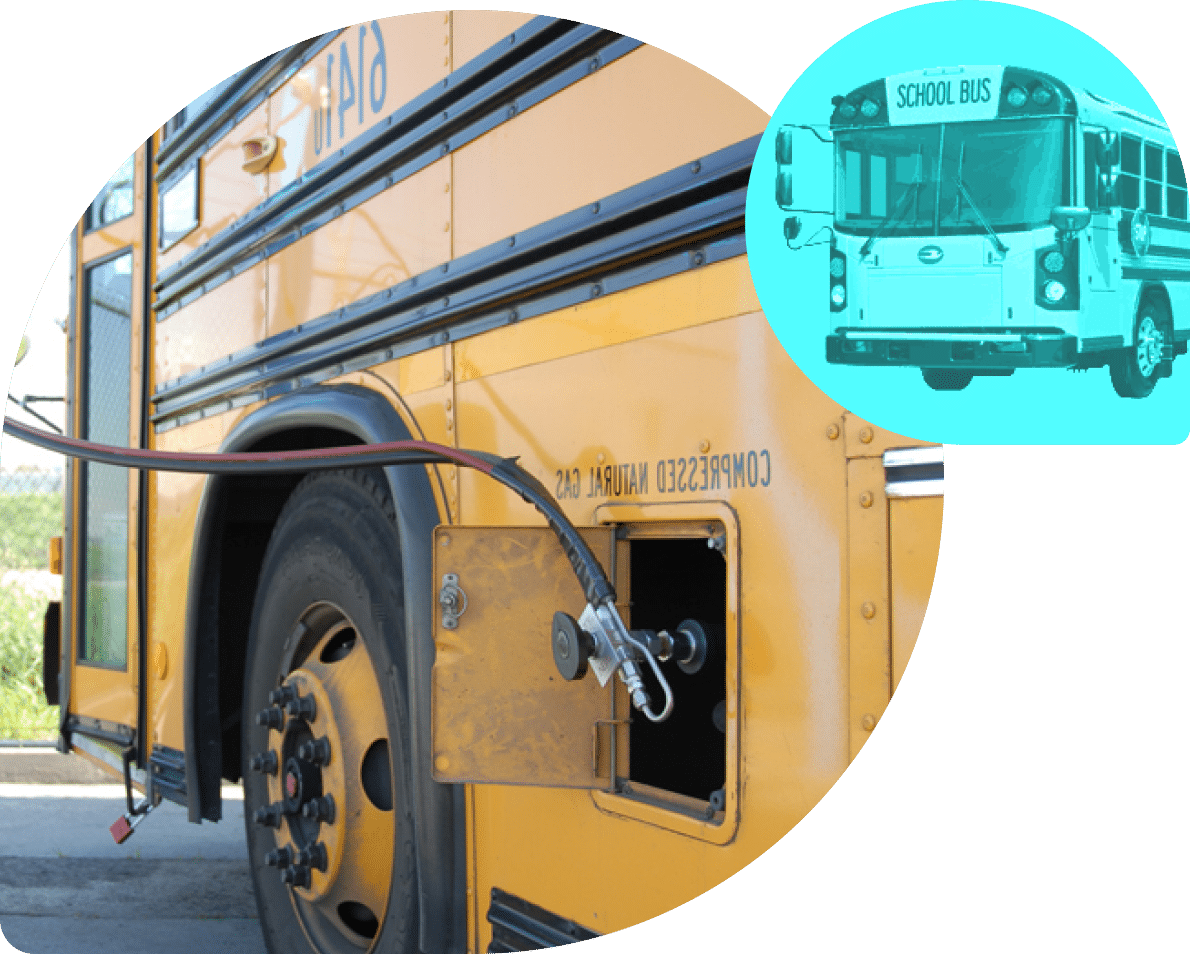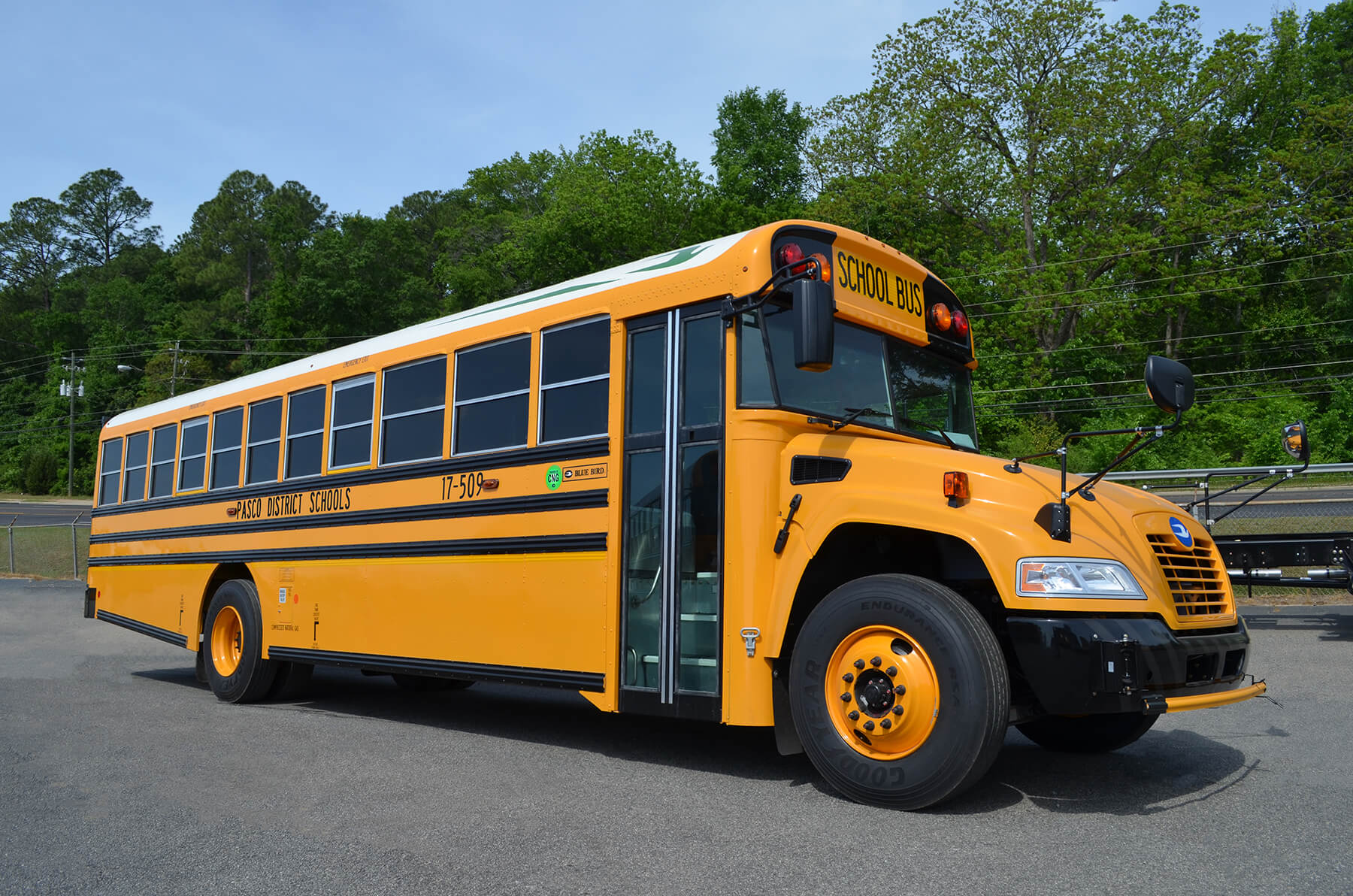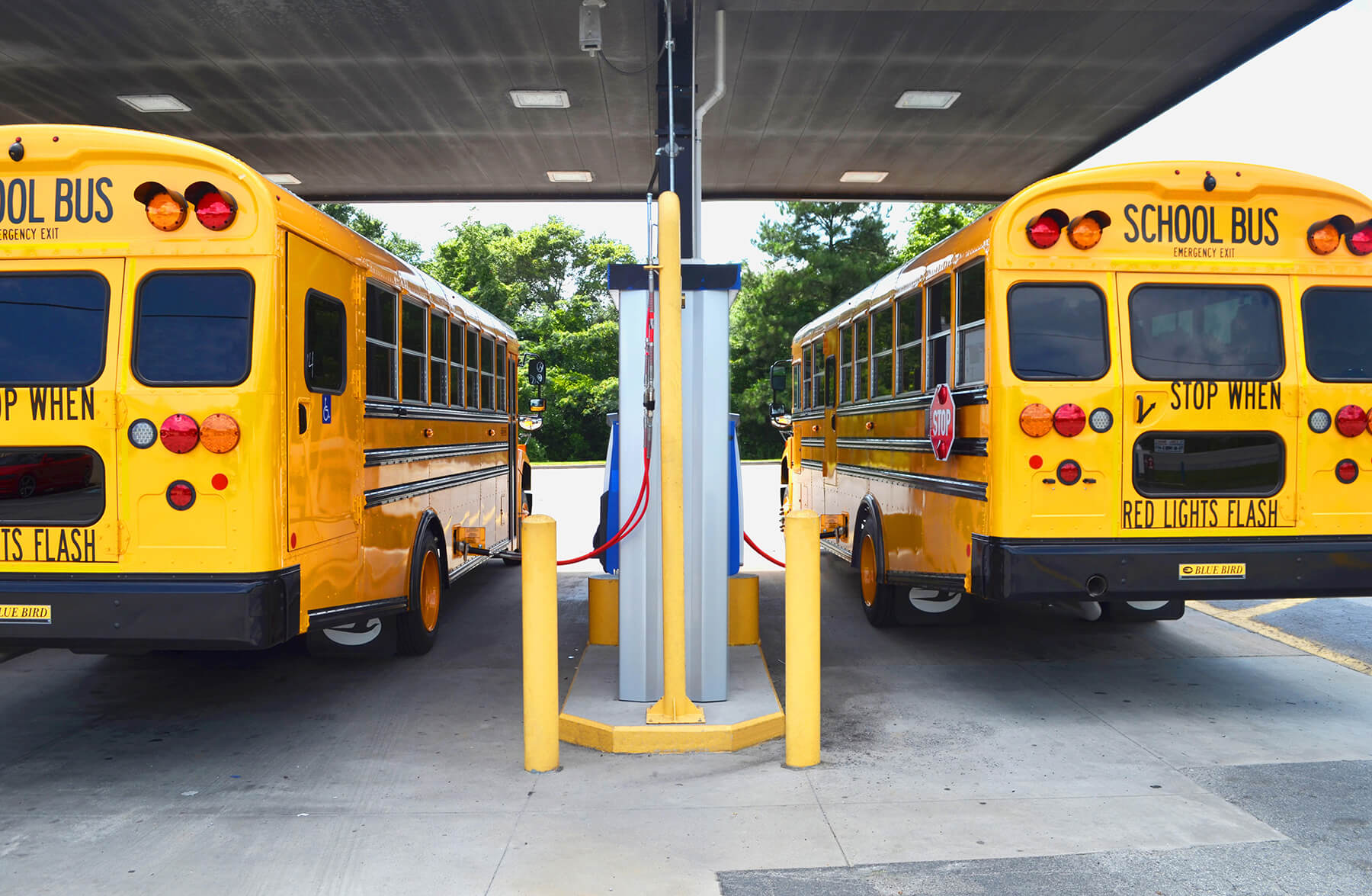150 school districts rely on NGVs
Every day, 25 million children in the U.S. spend an average of an hour and a half on public school buses to get to and from school. School districts and health advocates have recognized the importance of reducing students’ exposure to harmful diesel exhaust emissions. There are now more than 150 school districts operating approximately 5,500 natural gas powered vehicles in their fleets to safely transport students and to help improve the air quality of these students.
Reduce exposure to exhaust pollution
New natural gas buses equipped with low-NOx natural gas engines provide a 50-90 percent reduction in NOx emissions relative to new diesel buses. Similar to costly battery electric buses, natural gas buses provide a zero criteria pollutant emissions equivalent ride. But when fueled with RNG, natural gas buses can surpass battery electric options to achieve a carbon-negative fleet outcome.



Range, reliability regardless of weather
Regardless of terrain or temperature, natural gas buses enjoy a routine 250-mile range like their gasoline and diesel counterparts. But unlike diesel and battery-electric, natural gas buses are not plagued with start-up struggles in frigid weather conditions… regularly starting without aids down to -40 degrees Fahrenheit.
Find
BUY NGV
A wide array of Natural Gas Vehicle options are commercially available

Time-fill fueling option
Fleets that return to central depots for extended periods — such as overnight or long mid-day breaks in service — may find time-fill fueling systems more attractive. These systems are considered the most efficient and economical because they do not require as much compression capacity as a fast-fill system, and they do not require on-site CNG storage or fast-fill dispensers. In time-fill applications, drivers connect their vehicle to the automated system and walk away. The automated nature of time-fill fueling reduces as much as 15 minutes of labor time per driver per day.
Need a natural gas station on your route?
If use of existing fueling infrastructure is not practical, convenient, or economical, it may be better to build a new CNG, LNG, or LCNG station. NGVA can connect you with member station builders across North America.
NGVA can connect you with member station builders across North America.
Vehicles news



